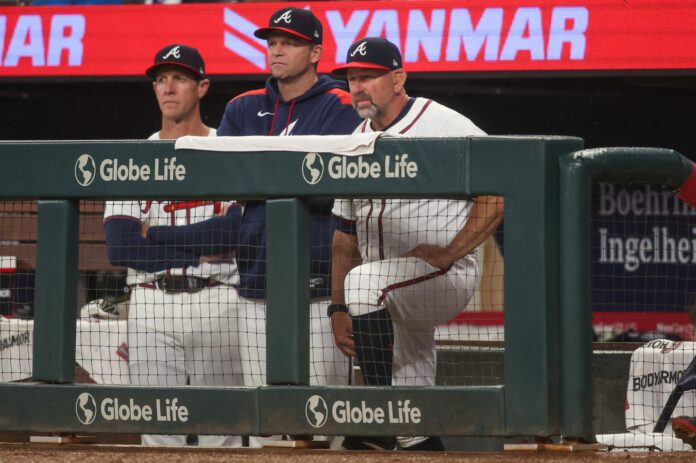
As the 2025 season fades into the rearview mirror, the Braves are making bold, strategic moves that may not scream “blockbuster” but echo with something even more valuable: intent. From the early offseason decisions, like the rapid trade of Jorge Soler and declining Travis d’Arnaud’s option, to the deeper cuts that quietly shaped the current 40-man roster, the Braves are charting a path that’s both calculated and revealing.
From Payroll Clarity to Roster Control
First came “financial flexibility.” Atlanta appeared to be clearing payroll in anticipation of a major acquisition. That move didn’t materialize as fans might have hoped. Jurickson Profar was the headliner, not a seismic signing, but the reasoning was sound: clear the books now, strike when opportunity knocks.
Now the theme has shifted. This winter, it’s about “roster flexibility.” And few teams have executed that with the kind of surgical precision the Braves just displayed. In total, fourteen roster spots were cleared, largely thanks to the churn from last year’s bullpen depth strategy and the natural fallout of expiring contracts and waiver claims. When the dust settled, the Braves had whittled their 40-man roster down to 37 players, just ahead of the Rule 5 protection deadline.
Why Burkhalter Was Left Exposed

And that’s where things get really interesting. The Braves didn’t protect a single draft-eligible prospect, including Blake Burkhalter, a talented pitcher with local ties and a compelling narrative. At first glance, this might seem like a surprising omission. But a closer look at his metrics, strikeout rate under 21%, walk rate over 10%, and average groundball numbers, reveals why Atlanta might feel comfortable taking the risk. He simply doesn’t fit the Rule 5 archetype.
Burkhalter’s minor league numbers, particularly at Triple-A, fall outside the common traits of players who get selected and stick. The Braves are betting on that pattern holding. It’s a decision that trades sentiment for strategy, and as cold as it may seem, it’s backed by data.
The Braves Positioning for Impact, Not Just Depth
So what is all this flexibility really for? The evidence points in two directions. First, the Braves are eyeing meaningful investments at shortstop and in the rotation, positions ravaged by injuries and inconsistency in 2025. Whether it’s a trade for Mitch Keller or Bo Bichette, or a high-cost signing like Chris Bassitt, Atlanta is positioning itself to strike.
Second, they’re preparing to be opportunists. By keeping those 40-man spots open, they’re ready to pounce on undervalued or recently waived talent. It’s a playbook that already worked last year, when the Braves nabbed Carlos Rodriguez by offering something no one else could: a 40-man roster spot.
Names like JJ Bleday, Christopher Morel, and Ramón Urias aren’t headline-grabbers, but they’re depth plays that could plug holes or add upside. And with the right environment, Atlanta’s clubhouse, coaching, and winning culture, those fringe pieces can become unexpected contributors.
In essence, the Braves are doing what smart organizations do: preparing the stage before the spotlight hits. This is the calm before the winter storm. And when the next big move comes, the Braves won’t need to scramble to make room; they’ve already done the heavy lifting.





